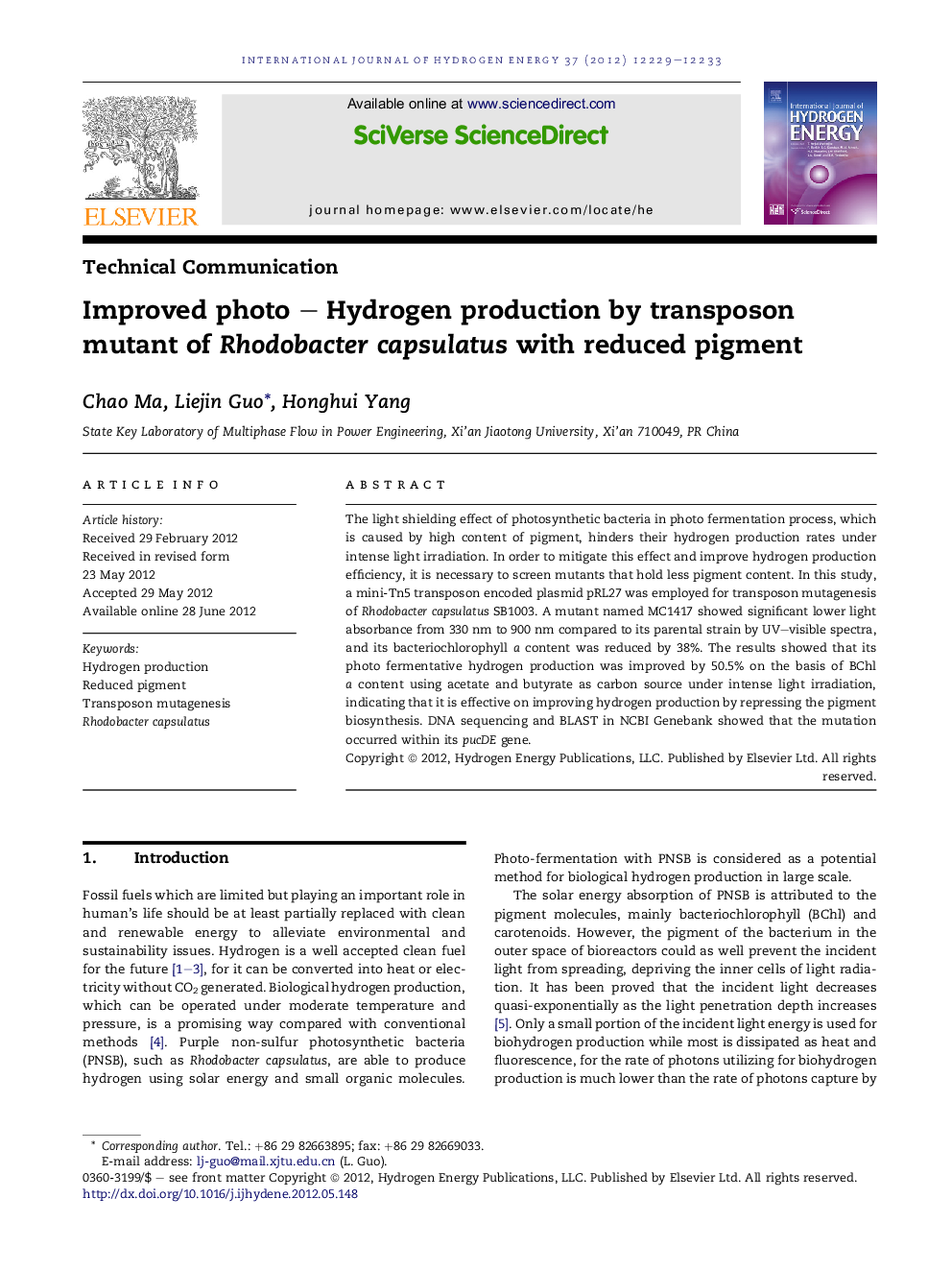| Article ID | Journal | Published Year | Pages | File Type |
|---|---|---|---|---|
| 1271057 | International Journal of Hydrogen Energy | 2012 | 5 Pages |
The light shielding effect of photosynthetic bacteria in photo fermentation process, which is caused by high content of pigment, hinders their hydrogen production rates under intense light irradiation. In order to mitigate this effect and improve hydrogen production efficiency, it is necessary to screen mutants that hold less pigment content. In this study, a mini-Tn5 transposon encoded plasmid pRL27 was employed for transposon mutagenesis of Rhodobacter capsulatus SB1003. A mutant named MC1417 showed significant lower light absorbance from 330 nm to 900 nm compared to its parental strain by UV–visible spectra, and its bacteriochlorophyll a content was reduced by 38%. The results showed that its photo fermentative hydrogen production was improved by 50.5% on the basis of BChl a content using acetate and butyrate as carbon source under intense light irradiation, indicating that it is effective on improving hydrogen production by repressing the pigment biosynthesis. DNA sequencing and BLAST in NCBI Genebank showed that the mutation occurred within its pucDE gene.
► Transposon mutagenesis was used to screen pigment mutant of Rhodobacter capsulatus. ► A reduced pigment mutant of R. capsulatus was created by transposon. ► Mutant with less pigment showed higher hydrogen production ability.
